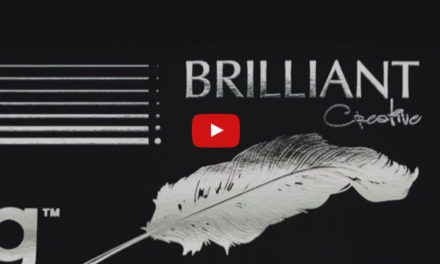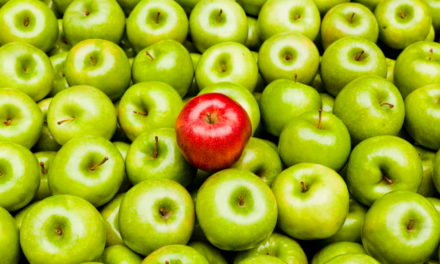THE IMPORTANCE OF CHOOSING MATERIALS FOR FLEXIBLE PACKAGING
The single most important thing any flexible packaging converter should know is that the ultimate purpose of any bag, pouch, or wrapper is to protect the packaged product. If the product arrives at the consumer spoiled, contaminated, crushed, or otherwise damaged, no amount of creative marketing or high-quality ingredients can fully undo the harm done to the brand’s reputation.
At the same time, flexible packaging converters need to be aware of the material and processing costs that come with creating a package. A converter’s bottom line is impacted by everything from material type and thickness to how much it costs to ship a pallet of finished goods. Even if a business purchases mostly pre-lams or pre-made structures, understanding why certain materials must go into different packaging types is necessary for any converter who wants to continue growing in new markets.
This article will cover some of the most frequently used materials in the flexible packaging space. We will look at their basic properties, common uses, and general strengths and weaknesses to help ensure even the newest flex pack converter has a solid knowledge base to build upon as they gain experience.
COMMON FLEXIBLE PACKAGING MATERIALS AND THEIR USES
The materials used in flexible packaging can fall into a variety of categories, and the list below is far from comprehensive as there are hundreds of materials and subsets of materials available. However, these are some of the materials a flexible packaging converter is most likely to encounter in their day-to-day operations.
PLASTICS
Plastic films are the bread and butter of the flexible packaging industry due to how well they balance strength, cost, and weight. They also make up the largest category by far due to how many iterations of different polymers exist in the market. While plastic is often used as a catch-all term for the layman, a flexible packaging converter should understand what makes each plastic different from the next in order to create an effective, cost-sensitive package.
Polypropylene (PP, OPP, BOPP, CPP)
A cost-effective film with a high melting point, polypropylene (PP) can be found in many iterations and is a staple in the flexible packaging space. It is often oriented in one or both directions in order to increase its durability, clarity, and effectiveness as a barrier layer, with biaxially oriented polypropylene (BOPP) being in especially high demand. When used as a barrier, PP effectively reduces a package’s water vapor transmission rate and keeps moisture from affecting products, such as ensuring powders do not clump together inside the package.
PP can also be used as a heat seal layer based on its polymer blend construction, in which case the converter will need to verify that the material has been handled correctly in facilities that follow food safety guidelines. PP provides less structure to packaging but is ideal for sterilization and boiling applications. Many print web films are made of PP with a variety of finishes, including gloss, matte, and opaque.
Polyester (PET, OPET, BOPET)
Durable but affordable, polyester is highly versatile and can be used in a broad range of packaging formats and contexts. Like PP, Polyester (PET) can be oriented to enhance its properties, but these versions are seen less frequently than standard PET. It is very popular in food packaging applications, where it provides superior strength, rigidity, and heat tolerance for stand-up pouches, sachets, and three-sided sealed bags.
As a barrier layer, PET serves as a mechanical barrier that prevents sharp products, such as frozen goods and nuts in the shell, from puncturing the package and exposing the contents to contaminants. It is often combined with paper packaging to create a viewing window for the consumer, seen frequently with dry pasta and some baked goods. It can also function as a print web film and can be found with gloss, matte, and even tactile soft-touch finishes.
Nylon
Nylon is valued for its ability to stretch and adapt to environmental changes while still providing impressive durability. Because nylon is hygroscopic, which means it allows moisture and humidity to pass through freely, it should never be used as a moisture barrier layer.
However, it does serve as an excellent mechanical barrier for sharp products and offers superior tear resistance for applications like tamper-resistant or child-proof packaging. Due to its stretchy properties, it is also popular in vacuum-sealed applications where the package needs to conform to the shape of the product while bouncing back once the package is opened, a property known as material memory.
Polyethylene (PE, LDPE, HDPE)
Although polyethylene (PE) is notoriously weak compared to other plastic films, it is highly elastic and can be combined with other materials to enhance its durability and benefit from their characteristics. Low-density polyethylene (LDPE) is commonly used to create products such as produce bags, plastic wraps, and plastic containers, while high-density polyethylene (HDPE) is durable enough to become milk jugs and plastic bottles.
In flexible packaging, PE is used as both a heat seal layer and as a chemical barrier layer. Because PE is resistant to damage from highly basic or acidic products, it can prevent products such as make-up removal wipes and cleaning solutions from leeching through the packaging and either damaging the package itself or potentially causing an adverse reaction for the consumer.
Ethylene-Vinyl Alcohol (EVOH)
This clear, flexible material can be a copolymer or a coating and features excellent resistance to cracking. It is used almost exclusively as a barrier layer that prevents oxygen and other gases from entering or leaving a package. Because many edible products can react negatively or even spoil when exposed to oxygen, EVOH is very common in food packaging.
On the other hand, fragile products, such as chips in a pillow bag, typically need some type of gas to serve as a cushion and prevent them from being crushed in shipping and handling. EVOH is especially necessary in these applications as oxygen needs to be kept out of the package, but the nitrogen or other inert gas that is pumped into the package needs to be kept in. This superior resistance to gas permeation is what makes EVOH an essential material for many flexible packaging operations.
METALS
Pound per pound, metallic and metalized films are typically more expensive than their plastic counterparts, but they still play a crucial role in all kinds of packaging applications. A responsible flexible packaging converter will realize that higher material costs may be necessary to extend a product’s shelf life.
Aluminum Foil
Most people know aluminum foil as a thin, crinkly metal film used to wrap up leftovers before they go into the fridge, but in the flexible packaging industry, aluminum plays a crucial role in protecting food products before they ever leave the store shelf.
While it is one of the more expensive materials a flex pack converter may buy, this film is highly effective as a barrier layer. It prevents moisture, gas, and even light from permeating a package to massively extend a product’s shelf life, maximizing sales and preventing food waste. It can also be seen in fractional packaging applications that require a dead fold, which enables a wrapper to stay closed without a seal. An example of this packaging type is individually wrapped chocolates sold in a larger plastic bag.
Metalized Barriers (METPET, VMPET, METOPP)
Metalized plastic films often serve as a more affordable alternative to aluminum foil and are produced by coating a PET or OPP film with a thin metallic layer (typically aluminum) or a metalized vapor. Using this method, metalized films are able to benefit from many of the strengths of aluminum without paying a premium. Metalized polyester (METPET) and vacuum metalized polyester (VMPET) are two of the more popular options. Metalized polypropylene (METOPP) is also popular in the film industry, but it differs significantly from polyester options.
Much like aluminum foil, these films can function as a barrier layer to block out moisture, gas, and light, making them good for everything from dehydrated goods and salty snacks to powdered drink mixes. While clear packaging is more common in medical applications, metalized barriers can help ensure medical tools and consumables remain sterile and undamaged until the package is opened. They can also be used to give packaging a reflective quality for added design appeal.
OTHER
Flexible packaging isn’t limited to plastics and metals. Ongoing research and product development is continuously bringing new packaging solutions to light as flexible packaging converters, brands, and consumers alike look for ways to reduce costs and minimize the environmental effects of the products sold on store shelves.
Cellulose (CLS)
Made of wood pulp, cellulose is a completely plastic-free film option that is gradually growing in popularity as market demand for eco-conscious packaging continues to grow. Besides reducing how much plastic is in circulation, some cellulose films are even certified home and industrial compostable, which means they will break down in a compost alongside organic matter.
As cellulose does not boast any barrier or structural properties, it is typically used as a print web film, where it can receive a variety of embellishments and value-add processes designed to market the product. It is even available in different finishes, such as gloss and matte. Its construction makes it ideal for easy tear applications, such as stick packs and sachets.
Paper
While everyone is familiar with paper, not everyone is aware that it can play a big role as a barrier layer for flexible packaging. While it does little to keep out moisture, gases, or chemicals on its own, paper does an excellent job of blocking UV radiation and keeping salty foods and products with a high fat content from going rancid. It is also considered to be a more environmentally friendly material choice by many brands and consumers, and it can serve as a popular aesthetic element in many markets, such as artisanal foods.
Ink
While ink is mostly used to convey information on a package and catch the eyes of passersby with bright colors and designs, it can also serve a practical purpose in the structure of a package by blocking light transmission. Each additional material layer in a flexible package reduces margins for the converter, but knowledgeable printers know how to utilize ink as a layer in and of itself to reduce expenses, shipping weight, and storage space within their facility while still ensuring the packaged product arrives at the consumer in optimal condition.
WANT TO LEARN MORE?
If you have more questions about a material type in this article or want to learn more about a film we didn’t cover, be sure to reach out to our team through phone or email. Our in-house solutions experts have years of experience designing and optimizing a variety of structures for the flexible packaging industry. If you want to learn more about the print web films Nobelus offers, take a look at our flexible packaging portfolio, which includes BOPP and PET films in various iterations to support a broad range of applications.





